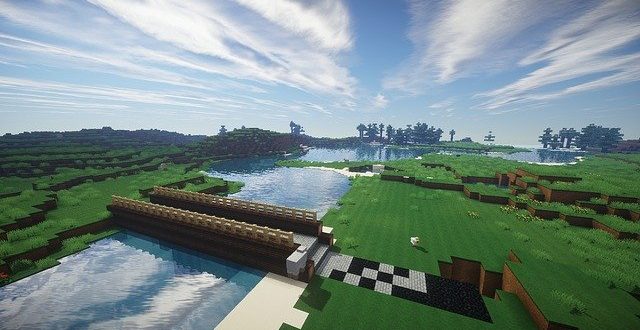Web Desk — What is the best way to teach a child about bushfires that could engulf their homes? Is it possible to teach a child how flooding and rising sea levels affect parts of their country?
According to an article published in cnet.com, in a place like Australia, where climate catastrophes are not only common but are becoming more prevalent, it’s all the more important to prepare children for the future.
What better tool could they have than the game they already spend all their free time playing?
The answer is Minecraft.
Minecraft Education was published on Nov. 1, 2016, and the NSW Department of Education has since provided free access to Minecraft: Education Edition to all NSW Government schools — yet the game is just now shining even brighter as a tool for educating students about climate change.
For the past few years, Warwick Goodsell, a geography teacher from New South Wales, has been using Minecraft in his classroom to great effect. Using a server, his students create and build solutions to geographical issues like erosion, pollution, urban planning, and more.
The Australian insurance company NRMA (in collaboration with PR agency Thinkerbell) released Climate Warriors in 2021, a free interactive game available on the Minecraft Education Edition and Minecraft Marketplace, in order to teach children as young as 7 how to protect themselves and their homes from bushfires.
In its 2021 report, the Interactive Games and Entertainment Association in Australia found that 78% of people said video games helped teachers connect with students, and 76% said video games helped schools remain relevant and up to date.
With programs like Climate Warriors and with game mods in which smelting ore or cooking in a furnace creates in-game emissions similar to those in real life, it is easy to see how well the game can align with geography learning outcomes. The course can teach students to plan, to adapt, to overcome, and — perhaps most importantly — to do so together.
What is climate change?
The term climate change refers to long-term changes in temperatures and weather patterns. Although these shifts may be natural, since the 1800s, human activities have been the main cause of climate change, primarily due to the burning of fossil fuels (such as coal, oil, and gas), which produce heat-trapping gases.
What can we do about climate change?
- Make your voice heard by those in power
Tell your Member of Parliament, local councillors and city mayors that you think action on climate change is important. - Eat less meat and dairy
Avoiding meat and dairy products is one of the biggest ways to reduce your environmental impact on the planet. Studies suggest that a high-fibre, plant-based diet is also better for your health – so it can be a win-win. - Cut back on flying
If you need to fly for work, consider using video-conferencing instead. For trips in the same country or continent, take the train or explore options using an electric car. - Leave the car at home
Instead of getting in the car, walk or cycle – and enjoy the physical and mental health benefits, and the money saved. For longer journeys, use public transport, or try car sharing schemes. - Reduce your engergy use and bills
Small changes to your behaviour at home will help you use less energy, cutting your carbon footprint and your energy bills: - Respect and protect green spaces
Green spaces, such as parks and gardens, are important. They absorb carbon dioxide and are associated with lower levels of air pollution. - Cut consumption and waste
Everything we use as consumers has a carbon footprint.
Avoid single-use items and fast fashion, and try not to buy more than you need.




